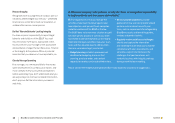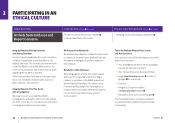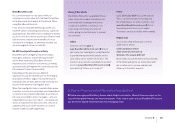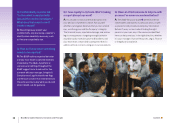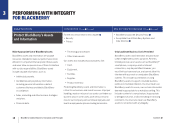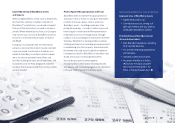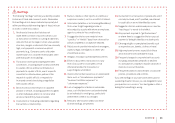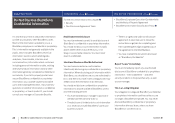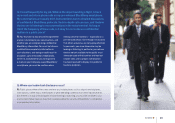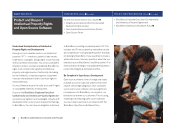Blackberry 2015 Annual Report Download - page 171
Download and view the complete annual report
Please find page 171 of the 2015 Blackberry annual report below. You can navigate through the pages in the report by either clicking on the pages listed below, or by using the keyword search tool below to find specific information within the annual report.
21
Contents
Red Flags
The following “red flags” will help you identify possible
instances of fraud and misuse of assets. Remember
that red flags do not always indicate impropriety but
rather provide possible warning signs of fraud, misuse
of assets or other misconduct.
1. Any financial transaction that does not
make either common or business sense, such
as transactions or events occurring at odd times,
amounts that are too large or small, unusual deal
structure, margins or discounts that are unusually
high, cash payments or excessive upfront
payments (e.g., Company assets sold under
market value or in a manner that excludes other
potential buyers from bidding).
2. Transactions with questionable government
connections, involving people closely connected
to a public ocial, political contributions or
payments to a public ocial, use of a specific
consultant or other business partner at the
request of a public ocial, or requests for
increased commission during a negotiation
with a public ocial.
3. Service contracts that result in no apparent
product or service, including payments to agents
or other individuals where it is not clear what
service or benefit they have provided.
4. Inconsistent or misleading statements regarding
transactions or relationships.
5. Rumors, media or other reports of unethical or
suspicious conduct, such as a conflict of interest.
6. Information (whether or not involving BlackBerry)
that comes to light regarding a bribe or
misconduct by a party with whom an employee,
agent or contractor has a relationship.
7. A suggestion that no one needs to know
“specifics” or “details” about how a transaction
will be completed or an objective attained.
8. Reluctance to provide information to managers,
auditors, legal, investigators or others who
should have access.
9. Irregular, missing or questionable documents.
10. Eorts to document a transaction in a way
that is inaccurate or incomplete, or that
otherwise falsifies the transaction or
supporting documentation
11. Invoices that contain suspicious or unexplained
items such as “miscellaneous payments,”
“business facilitation expenses” or
“unforeseen expenses.”
12. Lack of segregation of duties in vulnerable
areas, such that decisions can be dominated
by an individual or small group, particularly
where there is little or no oversight.
13. Refusal to take vacation and/or sick leave
(if other red flags are present).
14. Involvement in a transaction of people who aren’t
normally involved, aren’t qualified, are referred
to cryptically or are not identified by name.
15. Suggestion that an undisclosed person must be
“kept happy” or words to that eect.
16. Any payment required to “get the business”
or where there is a suggestion that an unusual
payment is being dictated by an outside party.
17. Extravagant gifts or unexplained benefits such
as expensive cars, jewelry, clothes or travel.
18. High employee turnover, especially in those
areas that are more vulnerable to fraud.
19. Frequent changes in corporate bank accounts
including unexpected overdrafts or declines
in cash balances, inability to explain variances in
invoices or account balances.
20. Frequent exceptions and overrides of corporate
policies, procedures and controls.
If you see red flags or you have some other basis for
suspecting fraud or misuse, you are obligated to raise
your questions or concerns. Your best guide is often a
feeling that something is wrong.



